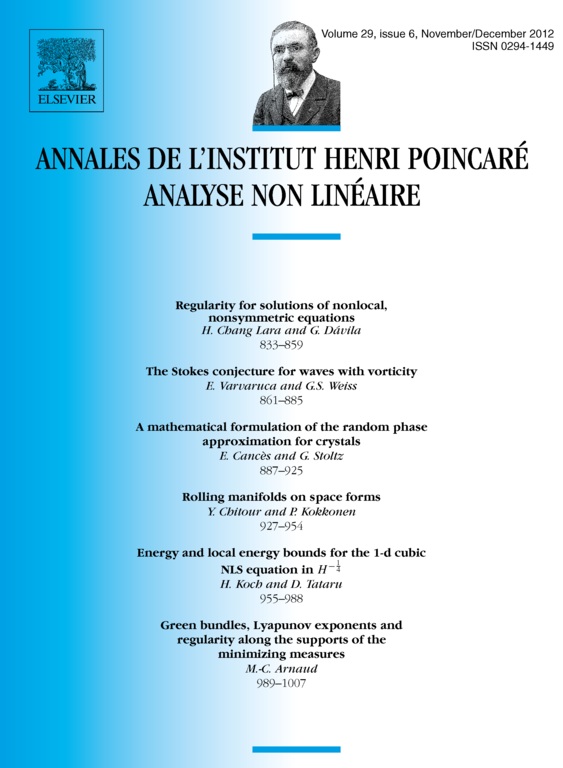A mathematical formulation of the random phase approximation for crystals
Eric Cancès
Université Paris Est, CERMICS, Projet MICMAC, Ecole des Ponts ParisTech – INRIA, 6 & 8 Av. Pascal, 77455 Marne-la-Vallée Cedex 2, FranceGabriel Stoltz
Université Paris Est, CERMICS, Projet MICMAC, Ecole des Ponts ParisTech – INRIA, 6 & 8 Av. Pascal, 77455 Marne-la-Vallée Cedex 2, France

Abstract
This works extends the recent study on the dielectric permittivity of crystals within the Hartree model [E. Cancès, M. Lewin, Arch. Ration. Mech. Anal. 197 (1) (2010) 139–177] to the time-dependent setting. In particular, we prove the existence and uniqueness of the nonlinear Hartree dynamics (also called the random phase approximation in the physics literature), in a suitable functional space allowing to describe a local defect embedded in a perfect crystal. We also give a rigorous mathematical definition of the microscopic frequency-dependent polarization matrix, and derive the macroscopic Maxwell–Gauss equation for insulating and semiconducting crystals, from a first order approximation of the nonlinear Hartree model, by means of homogenization arguments.
Cite this article
Eric Cancès, Gabriel Stoltz, A mathematical formulation of the random phase approximation for crystals. Ann. Inst. H. Poincaré Anal. Non Linéaire 29 (2012), no. 6, pp. 887–925
DOI 10.1016/J.ANIHPC.2012.05.004